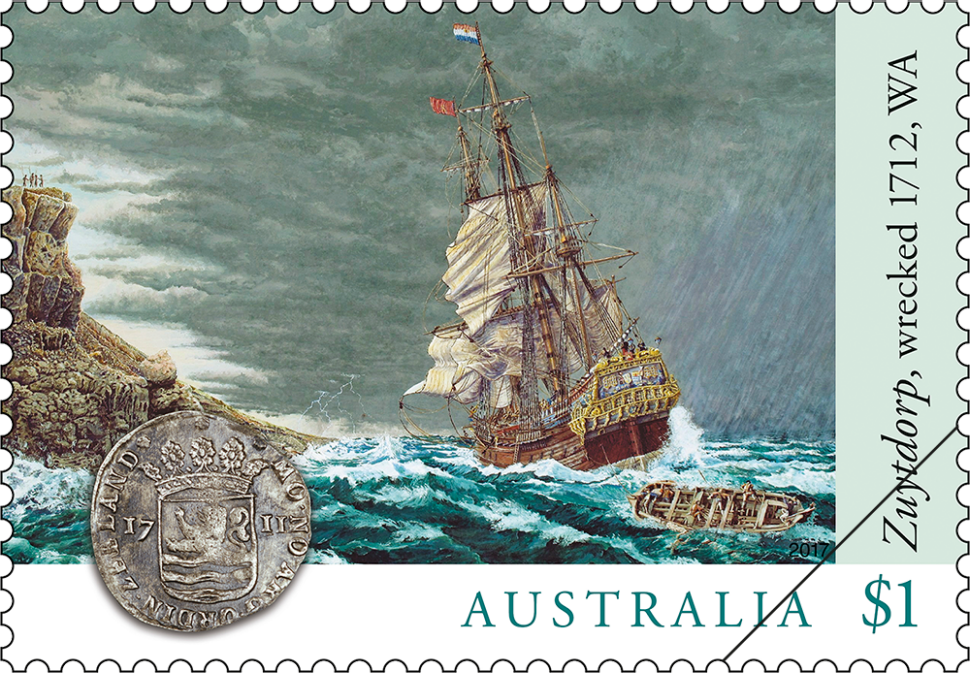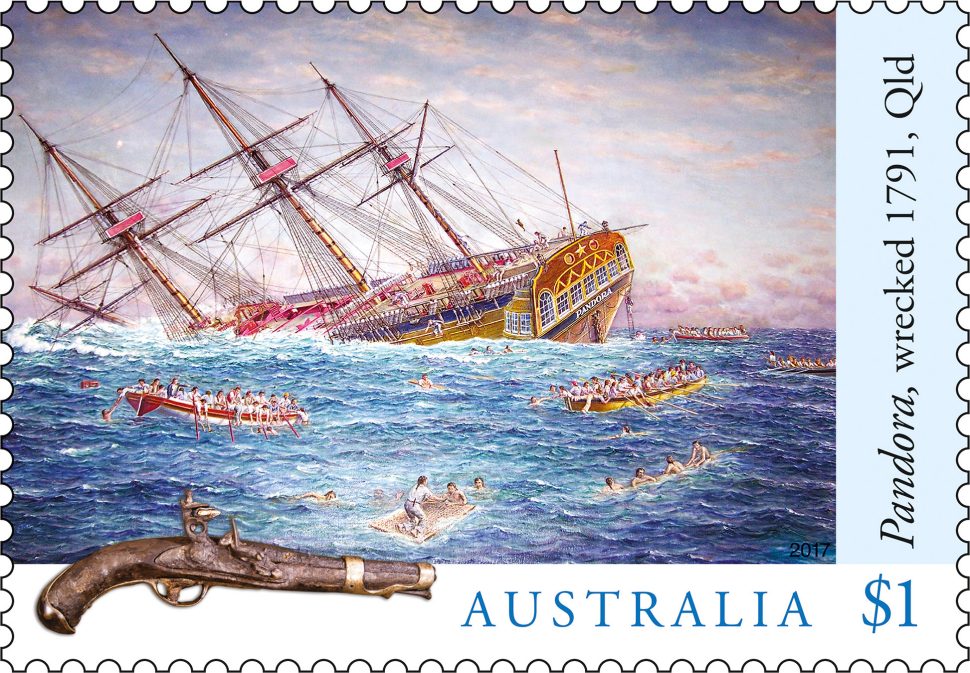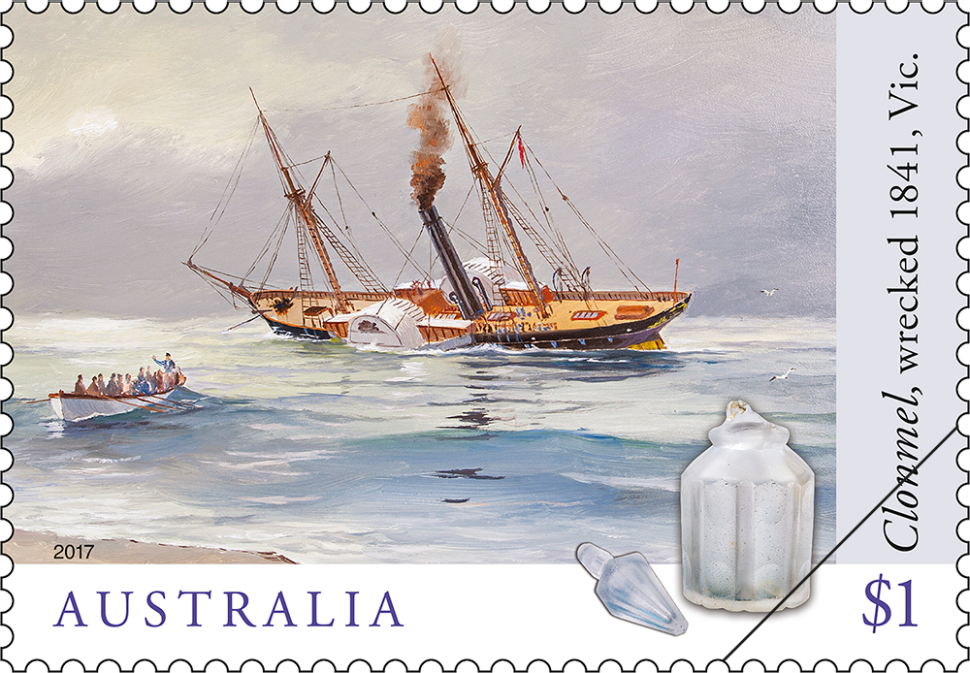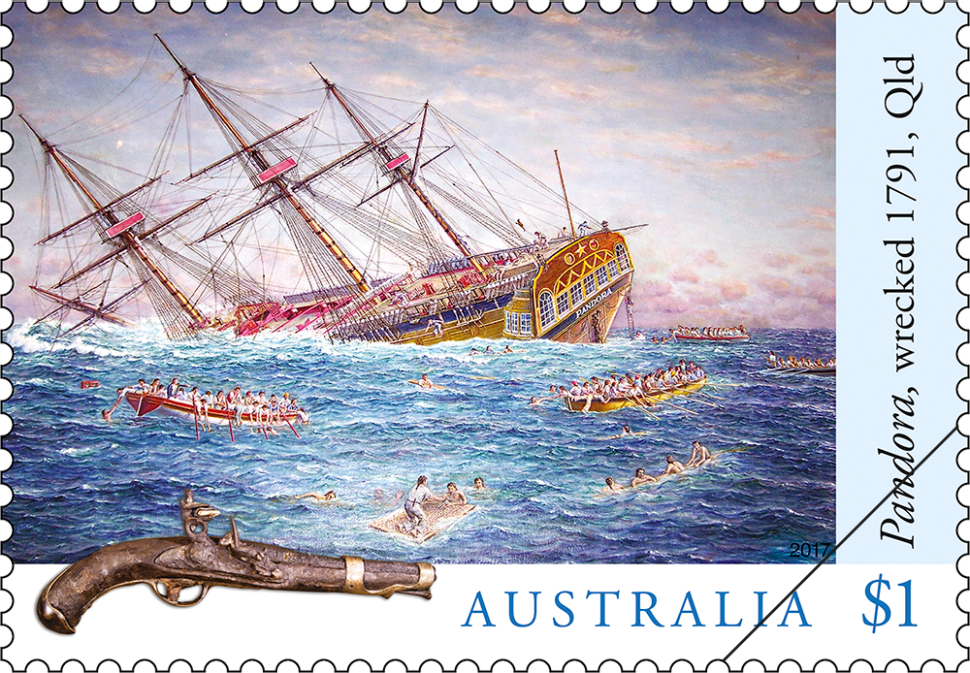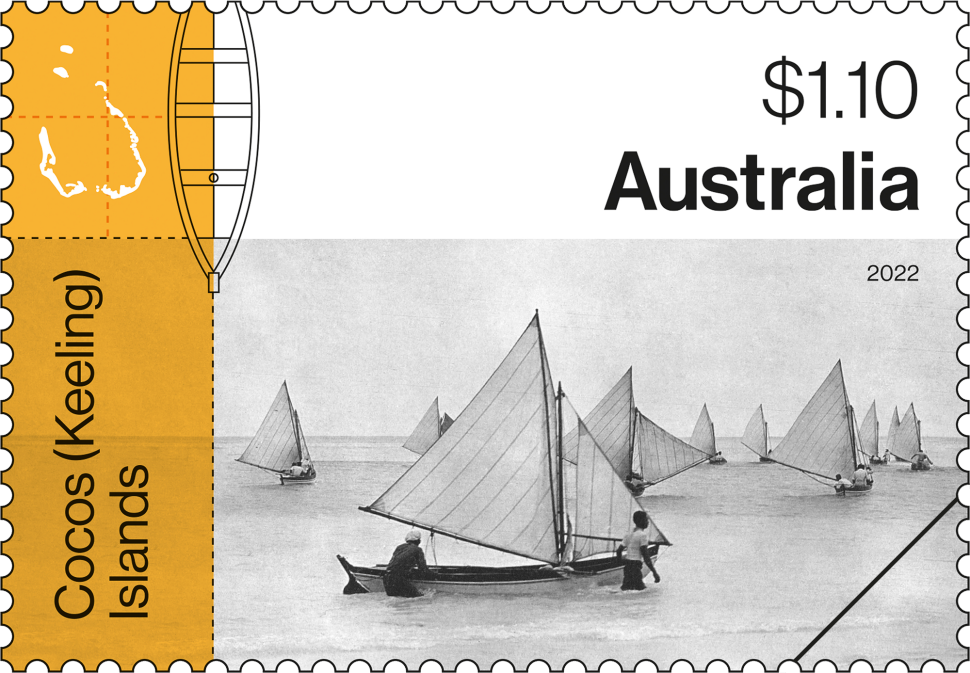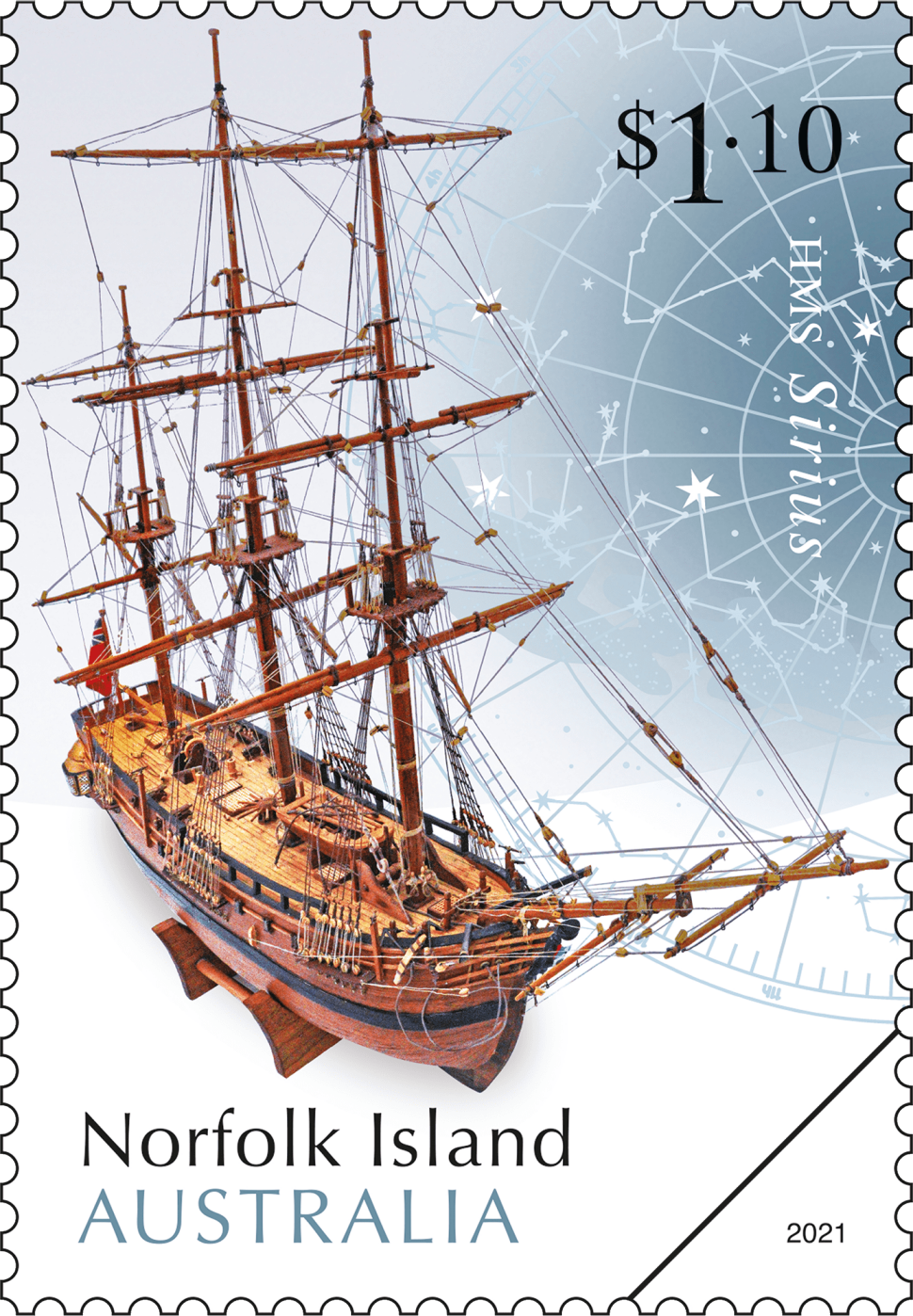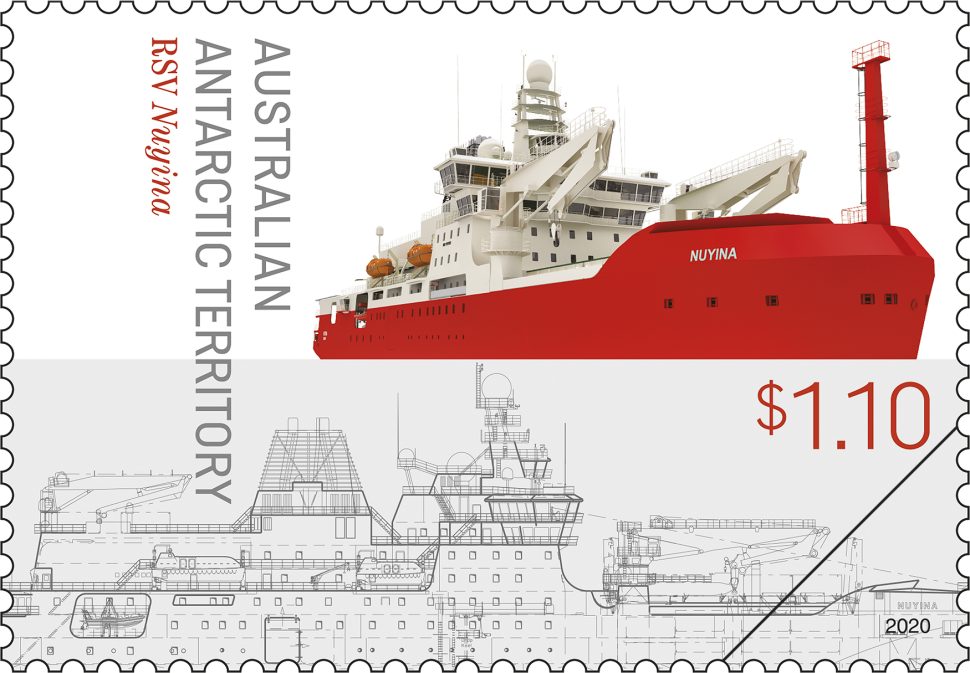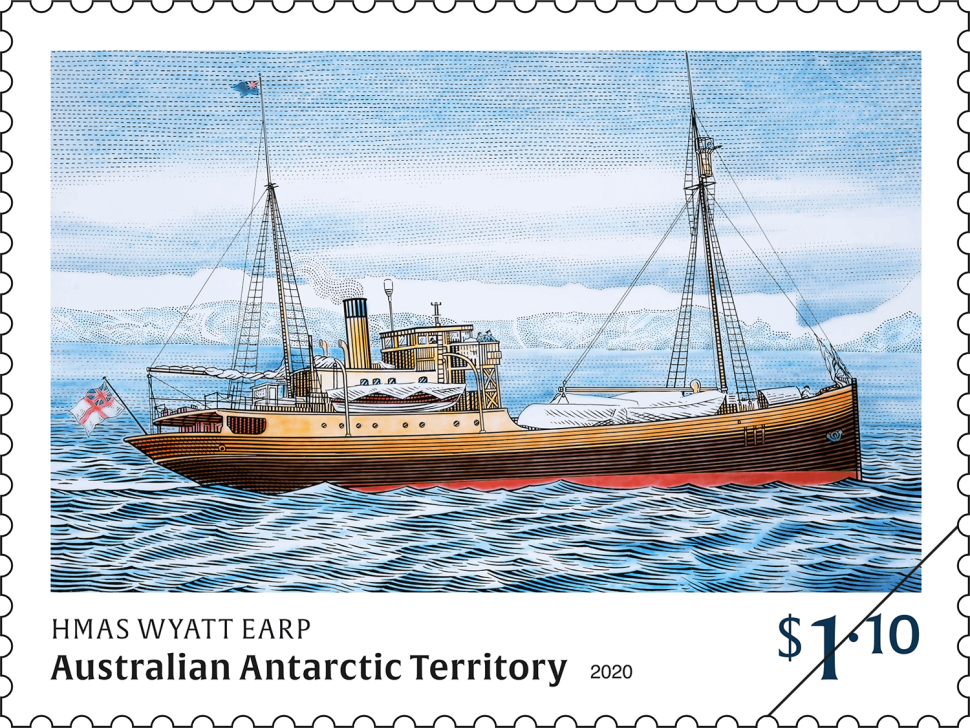Since the 1600s more than 8,000 shipwrecks have been recorded as occurring in Australian waters, of which only one-quarter have been located. Once located, however, wrecks and their relics reveal much about life on board the ship, the competence of the crew, and the social, political and commercial climate in which each journey took place.
This stamp issue features artists’ impressions of three historic and protected shipwrecks, together with a recovered artefact.
Designer
Simone Sakinofsky, Australia Post Design Studio
Products released in this issue
- First Day Cover (blank, gummed and self-adhesive)
- Stamp pack
- Maxicards
- Self-adhesive roll of 100
- Self-adhesive booklet of 10
- Medallion cover (limited to 3,500)
- Prestige book
Technical specifications
- Issue date
- 29 August 2017
- Issue withdrawal date
- 31 March 2018
- Denominations
- 3 x $1
- Stamp design
- Simone Sakinofsky
- Product design
- Simone Sakinofsky
- Printer
- RA Printing
- Printer - rolls
- Pemara
- Paper - gummed
- Tullis Russell Red Phos
- Paper - self-adhesive
- MC90, C100, RAFUnik
- Printing process
- Offset lithography
- Stamp size
- 37.5mm x 26mm
- Perforations
- 13.86 x 14.6
- Sheet layout
- Module of 50
- FDI postmark
- Port Albert VIC 3971
- FDI withdrawal date
- 27 September 2017
The Zuytdorp was one of a string of Dutch VOC trade ships to fall foul of the West Australian coast and the “Roaring Forties” winds during the 17th and 18th centuries. It wrecked just south of Shark Bay, sometime in June 1712, against what are now known as Zuytdorp Cliffs. The ship was carrying highly valuable cargo, including thousands of silver coins valued at 250,000 guilders, intended as trade for spices and other ‘exotic’ goods. Wreck artefacts were discovered near the site in 1927 (so 90 years ago in 2017) including silver coins dated 1711 (such as that featured on the stamp), and these coins helped archaeologists in the 1950s and 60s to identify the wreck site as that of Zuytdorp. There is an area of the wreckage site called the “carpet of silver” because of the number of coins that still remain there.
The painting used in the stamp design is by VOC specialist and artist Adriaan De Jong. The silver coin from the wreck is part of the Western Australian Museum collection.
HMS Pandora, which sank on the Great Barrier Reef on 29 August 1791 on her way home to England, had first successfully located the HMS Bounty and captured most of her infamous mutineers. The Pandora pistol symbolises the dangerous quest of capturing the mutineers and keeping them prisoner on board the ship and is one of more than 7,000 artefacts recovered from the wreck.
The painting is by renowned maritime artist Oswald Brett, courtesy of the Queensland Museum. It is based, in part, on an etching by Lieutenant Colonel Batty, which itself is based on a sketch by Pandora survivor Peter Heywood. The pistol is part of the Queensland Museum collection.
The paddle steamer Clonmel was arguably the first luxury steamship to operate in Australian waters and a stark contrast to its slow and uncomfortable predecessors. The Clonmel departed Sydney on only its second voyage in December 1840, with 80 passengers and crew. On 1 January 1841, the Clonmel struck a sandbar on the east coast of Victoria. All on board were saved, though the highly valuable cargo of bank notes and expensive drapery had been thrown overboard in a desperate attempt to save the ship. The wreck is the oldest located steamship wreck in Australia and an important archaeological site. The shipwrecks event also helped to draw attention to an alternate access route to the rich grazing land now known as Gippsland.
The painting of the Clonmel is by maritime artist Ian Hansen. The crystal decanter and stoppers, which symbolise the luxurious nature of the ship, are part of the Heritage Victoria collection.
This content was produced at the time of the stamp issue release date and will not be updated.


